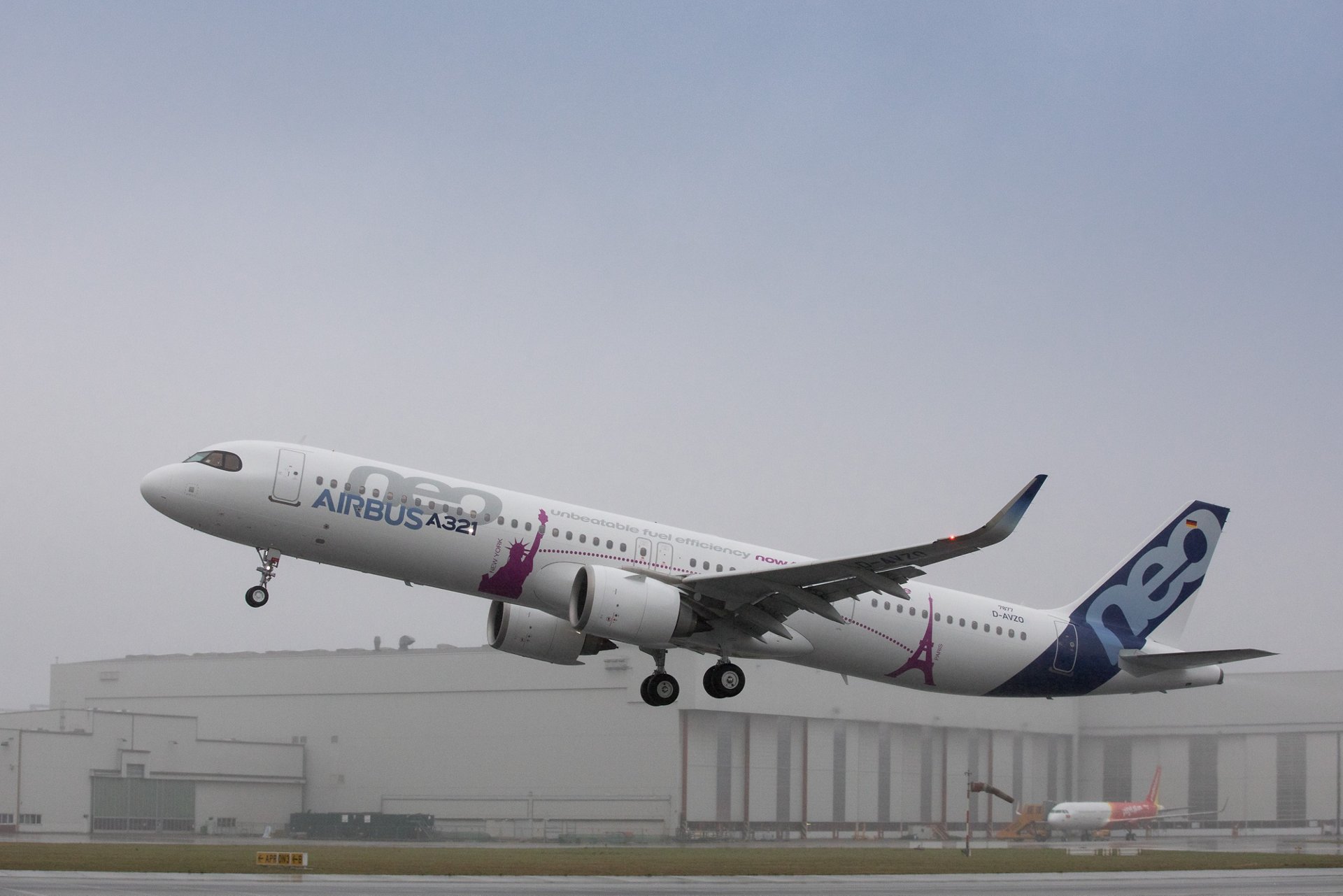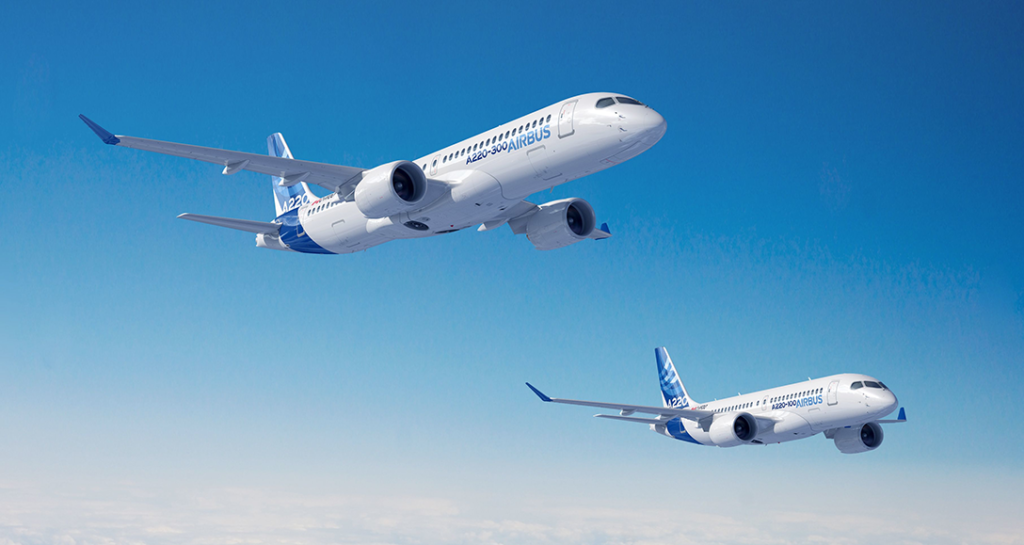Leeham News and Analysis
There's more to real news than a news release.
Leeham News and Analysis
Looking ahead for 2020 and 2030 decades: Airbus
First in a series of reports.
Subscription Required
By Scott Hamilton and Vincent Valery
June 17, 2020, © Leeham News: Airbus was riding high in February.
The A321XLR was a clear winner. An important order was won from United Airlines, up to then an exclusive Boeing narrowbody customer. American Airlines selected the XLR. An order was expected from Delta Air Lines.
Each order was another that made it impossible for Boeing to launch the New Midmarket Airplane (NMA).
In one of his first actions, Boeing CEO David Calhoun, taking office Jan. 13, put the NMA on indefinite hold, pending a complete review of Boeing’s product strategy.
The Boeing 737 MAX remained grounded by regulators, with no return to service in sight.
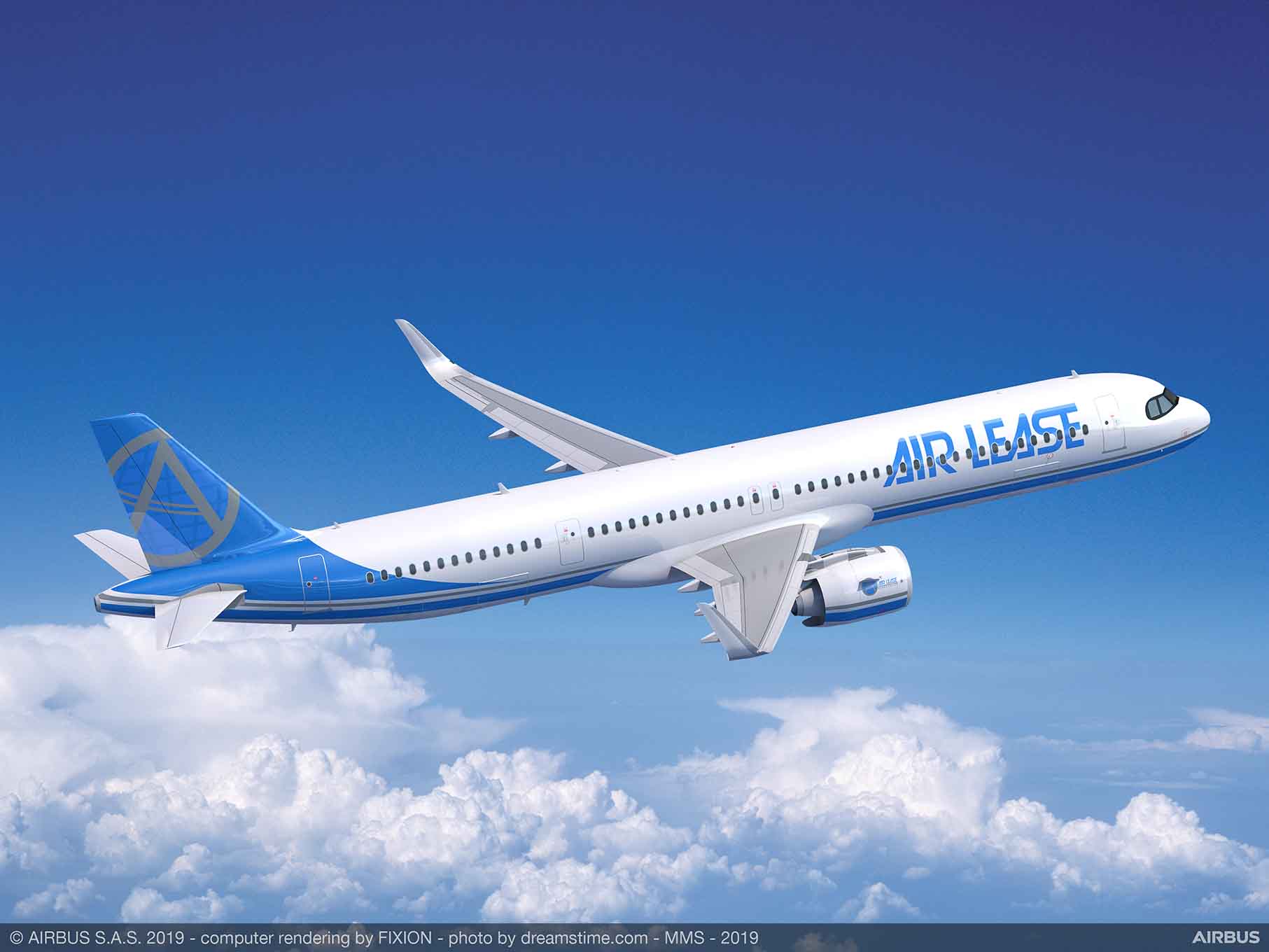
The Airbus A321XLR. This 9-hour capable airplane helps fragment routes–and soften demand for widebody aircraft. Source: Airbus.
Things couldn’t be going better for Airbus.
And then in mid-March, the COVID crisis became a global pandemic. Air transportation fell up to 95%. Airlines required government bailouts. Airbus CEO Guillaume Faury said the very existence of Airbus was threatened.
Summary
- COVID’s impact.
- A320 family ‘s commanding lead over Boeing.
- A220 commands low-end of single-aisle sector.
- A330neo is the weak link.
- Looking ahead in product strategy.
Posted on June 17, 2020 by Scott Hamilton
Mitsubishi’s options for the SpaceJet
Subscription Required
By Scott Hamilton
Introduction
June 2, 2020, © Leeham News: Mitsubishi Heavy Industry (MHI) yesterday closed the acquisition of the Bombardier CRJ program.
There are 15 CRJs in backlog to complete. But the purpose of the acquisition was to give MHI a global product support system for the SpaceJet.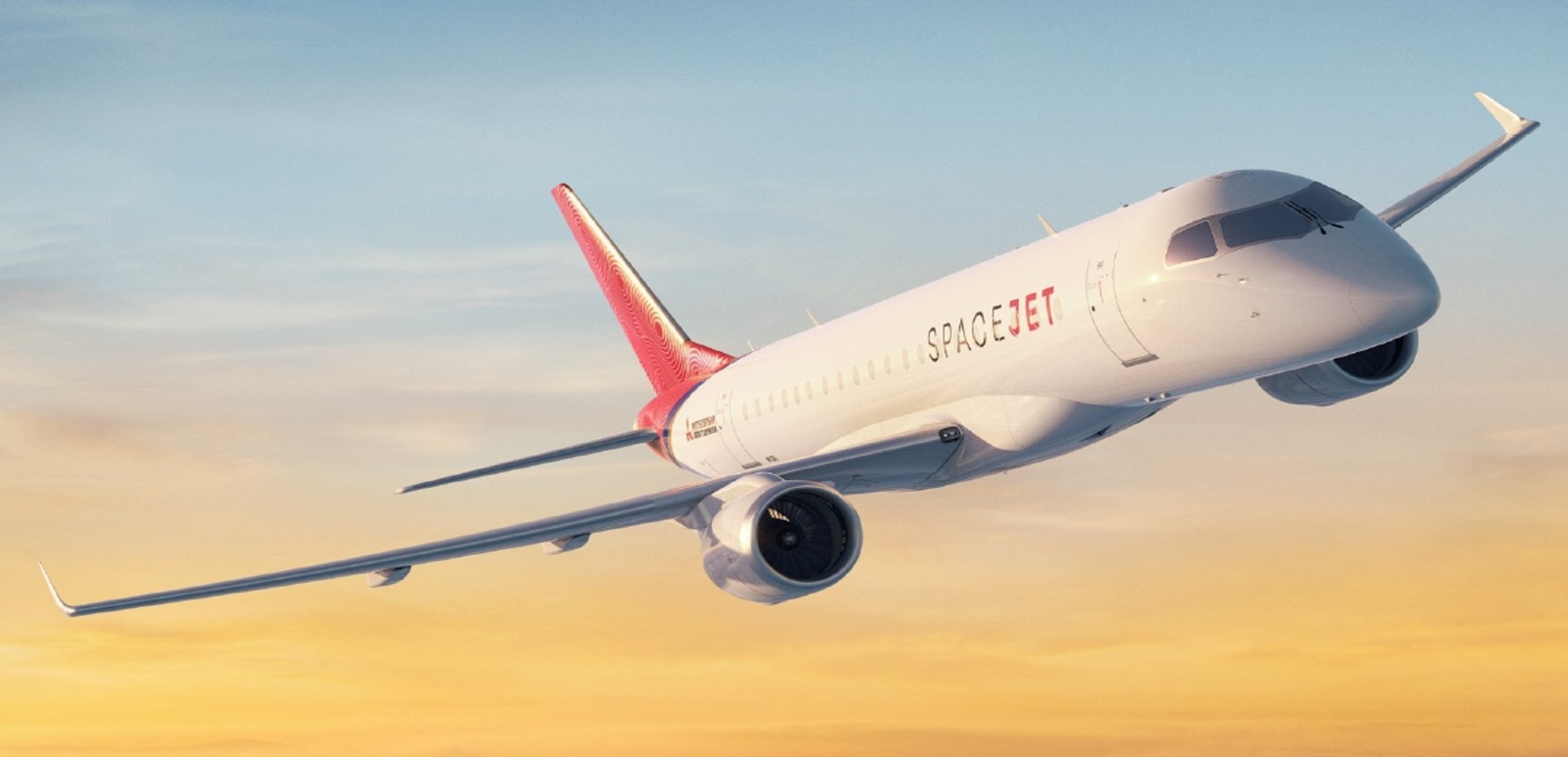
With the aviation world still reeling and confused by the “suspension” of the SpaceJet program, what are the options going forward?
MHI last month announced it was suspending indefinitely development of the M100 SpaceJet. MHI said it will reevaluate the market demand of the M100. It suspended further flight testing of the M90 SpaceJet. It says it will proceed with office “validation” of the M90 for certification. Facilities in the US and Canada devoted to the SpaceJet program are closing. About half the workforce devoted to SpaceJet in Nagoya, Japan, is being reduced.
Customers that signed MOUs for 495 M100s and which have firm orders for some 200 MRJ90s (the previous brand for the M90) are in limbo. Suppliers are in limbo. MHI’s failure to communicate with them leaves a planeload of questions and no answers.
MHI’s move clears the way for Embraer to have a monopoly in the regional jet space. Unless—unless MHI restarts the SpaceJet program on its own or partners with another company to make a commitment to developing a new airliner.
LNA noted when the Boeing-Embraer joint venture collapsed that this presented opportunities for MHI and Boeing to renew and expand their previous relationship for the MRJ program. Here are some possibilities facing MHI.
Summary
- Kill SpaceJet entirely.
- Restart SpaceJet.
- Resuscitate the agreement for Boeing to support the MRJ program, updating it to the SpaceJet.
- Resuscitate and expand the previous agreement, strengthening the development SpaceJet and co-marketing by Boeing.
- Create an entirely new cooperative agreement, vastly broadening and strengthening decades-long ties between MHI and Boeing. LNA sees this as including SpaceJet and an entirely new family of aircraft replacing the 737 MAX.
- An expanded, broader agreement could even include development of a new “NMA Lite.”
- Finally, buy or create a JV with Embraer Commercial Aviation.
Posted on June 2, 2020 by Scott Hamilton
Mitsubishi SpaceJet retreat is the best news for Embraer in months
Subscription Required
By Scott Hamilton
Analysis
May 25, 2020, © Leeham News: Mitsubishi Heavy Industries (MHI) surprising retreat from its SpaceJet regional airliner program is the best news in months for beleaguered Embraer.
This takes pressure off the Brazilian manufacturer and gives it time to regroup after Boeing jilted it at the alter by walking away from a proposed joint venture.
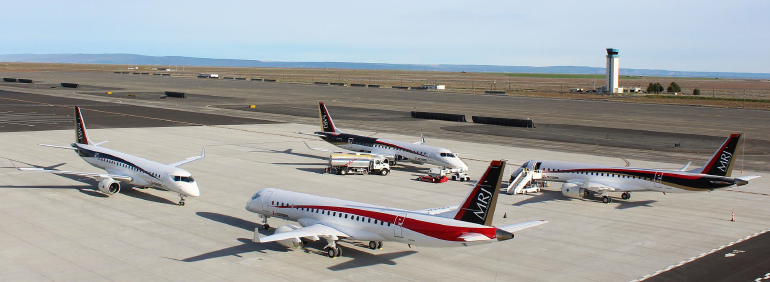
Going into storage: four Mitsubishi MRJ90s at Moses Lake (WA). Photo: Mitsubishi.
MHI’s actions leave Embraer with a monopoly in the 76-100 seat arena vs new airplanes. The M90 SpaceJet is not a viable competitor to the E175-E1 or the struggling E175-E2. Embraer’s competition will be its own used jets, plus used Bombardier CRJ-700/900s.
Summary
- Closing US operations entirely. Closing the recently opened engineering center in Montreal
- Continued operation of the CRJ product support center in Montreal or relocation to Nagoya uncertain.
- Major cost-cutting drive.
- MHI wants to certify M90, then consider whether to proceed with M100.
- M100 has MOUs for 495 aircraft.
- MRJ90 was not certifiable due to design deficiencies.
- Redesigned M90 meets certification requirements.
- M90 is economically uncompetitive with E-Jet.
- COVID-19 upends entire airline industry, casting doubt in MHI’s commitment to SpaceJet future.
Posted on May 25, 2020 by Scott Hamilton
HOTR: Mitsubishi, Bombardier set June 1 to close CRJ deal
By the Leeham News staff
May 6, 2020, © Leeham News: Mitsubishi Heavy Industries announced May 7 (Tokyo time) that it will close the acquisition of the Bombardier CRJ program June 1.
Production of the CRJ was to end this summer. The COVID crisis effectively terminates the program now. But the CRJ itself wasn’t the reason MHI  bought the program, for US$500m. The attraction was the built-in global product support system for the CRJ that will transition to the M100 SpaceJet. It also provides a new revenue/profit stream as MHI enters the global RJ market.
bought the program, for US$500m. The attraction was the built-in global product support system for the CRJ that will transition to the M100 SpaceJet. It also provides a new revenue/profit stream as MHI enters the global RJ market.
Along with it, as icing on the cake, is acquisition of Bombardier’s sales team, infrastructure and other assets.
It would take years for MHI and Mitsubishi Aircraft Corp. (MITAC) to establish its own product support system.
 This is a major step in development of the SpaceJet as a new global competitor.
This is a major step in development of the SpaceJet as a new global competitor.
With the collapse of the Boeing-Embraer joint venture, MITAC can reinvigorate and strengthen its relationship with Boeing.
Embraer, which said it needed the Boeing JV to compete in the future with Airbus against the A220, increasingly faces higher risks as MITAC and MHI evolve the CRJ product support system and potentially strengthens the Boeing relationship.
MHI also announced that it will immediately write down the $500m acquisition by ¥50bn- ¥ 70bn ($470m-$656m).
Posted on May 6, 2020 by Scott Hamilton
Pontifications: Ugly, fundamental changes coming for airline industry
May 4, 2020, © Leeham News: The global airline industry is on the cusp of a fundamental restructuring that will be painful, and painfully long.
A few airlines already ceased operations.
Several others are on the brink of filing for bankruptcy—among them Lufthansa and Virgin Atlantic, brand names that aren’t normally at the top of an endangered list.
A shake-out in Europe was already underway before the COVID-19 crisis erupted. The inevitable shake-out in Asia hadn’t yet begun.
Fleet rationalization among legacy carriers will occur at rapid-fire speed. And some carriers now have the opportunity to shed unprofitable routes that were maintained for market share.
It’s going to be an ugly process, though.
Posted on May 4, 2020 by Scott Hamilton
Airbus 1Q2020, preparing for “the gravest crisis in our industry’s history”
April 29, 2020, © Leeham News: Airbus presented its results for the first quarter of 2020 today. In the accompanying news conference, Airbus CEO Guillaume Faury said, “we are facing the gravest crisis in our industry’s history,” and the company is implementing several measures to secure Airbus’ future.
World travel has disappeared, and new airliner deliveries will be down for years. Production of Airbus commercial aircraft is cut with one third, but this will be adapted as actual demand evolves, with the next adjustment expected in June.
Posted on April 29, 2020 by Bjorn Fehrm
Pontifications: Taking a knife to a gunfight
April 27, 2020, © Leeham News: There is a great line in the movie, The Untouchables. Sean Connery’s character tells an assassin that he’s bringing a knife to a gunfight.
That’s what came to mind when Embraer says it will seek remedies against Boeing following the latter’s terminating the joint venture agreement between the two companies.
In the movie, the assassin lured Connery into a trap. Connery was gunned down by a machine gun. But don’t expect Boeing to be lured into any trap by Embraer.
Boeing doesn’t pull a move like this without thinking through all the possibilities. It may muff the thought process, as will be noted below, but it does think through alternatives.
Posted on April 27, 2020 by Scott Hamilton
How much did the CSeries cost Bombardier?
By Bjorn Fehrm
Subscription Required
Introduction
February 20, 2020, © Leeham News: As we wrote in last week’s article about the A220 flying the Montreal to Toulouse route, the stakes are high in the civil airliner business. If you don’t have a very strong balance sheet you shouldn’t enter the business.
Bombardier learned this the hard way. Its follow up project to its successful CRJ regional jets, the CSeries, brought Bombardier to the brink of bankruptcy and it had to sell the project to Airbus at a fraction of its value. The project cost more to develop and produce than planned despite not running off the rails during development like Boeing’s 787 or Mitsubishi’s MRJ.
We analyze why it cost so much and at what fraction Airbus got the program.
Summary:
- The CSeries nearly doubled its development costs despite being void of major hiccups. What was the cause?
- Airbus picked up the program when Boeing forced Bombardier to sell. How much of a bargain did Airbus get?
Posted on February 20, 2020 by Bjorn Fehrm
Airbus 2019: an operationally good year hit by compliance costs
February 13, 2020, © Leeham News in Toulouse: Airbus presented its results for 2019 today in Toulouse. Operationally, the company made a profit of €6.9bn but heavy fines (-€3.6bn) to settle a long-running bribery case and contingencies for A400M development cost coverage brought the net result to a loss of €1.3bn.
The Commercial aircraft division delivered 8% more aircraft 2019 (863 units vs. 800 2018). The mix of aircraft changed towards higher-margin single-aisle types like A321neo and A321LR whereas widebody margins peaked during 2019. The helicopter business is flat in a tough market and the profits of the Defense and Space division declined 40% on flat revenues.
Posted on February 13, 2020 by Bjorn Fehrm
Airbus buys Bombardier’s share in A220, now sole owner together with the Government of Quebec
By Bjorn Fehrm
February 13, 2020, © Leeham News in Toulouse: The news this morning that Airbus is now the sole owner of the A220 (75%) together with the Government of Quebec (25%) is good news for the A220 and for Quebec.
Bombardier is a company in trouble and it was forced to try and save cash in the A220 partnership rather than invest in the future. This potential limitation on the A220 program is now resolved. Airbus gets sole responsibility for future plans and it has in the Government of Quebec a partner that will be positive to the growth of the A220 as it means more business for the Quebec aeronautical industry.
Posted on February 13, 2020 by Bjorn Fehrm



